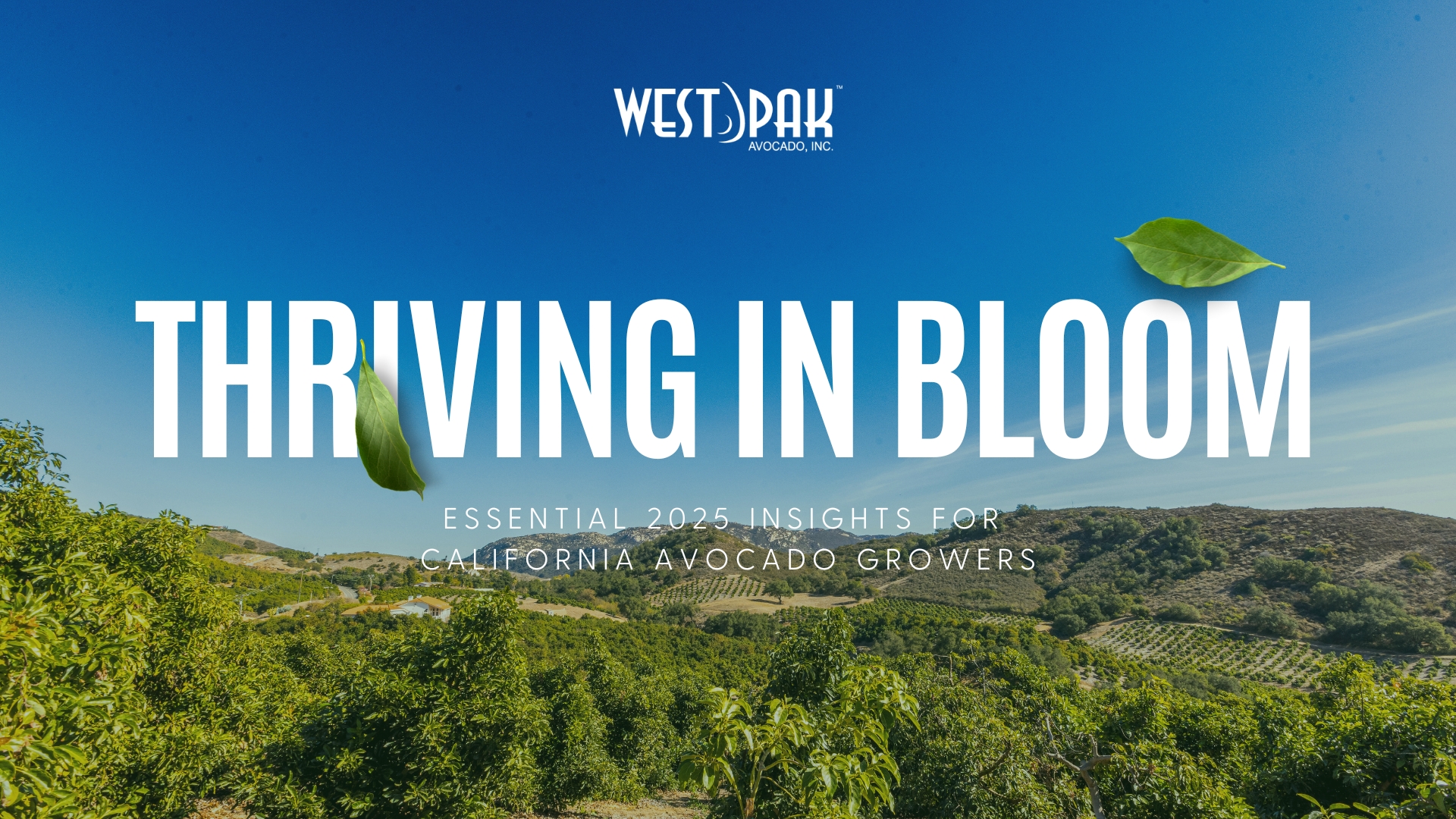
With California avocado season in full bloom, early spring presents a critical window for growers to ensure the health, productivity, and longevity of their orchards. Insights from the Avo Experts at West Pak highlight essential practices and challenges that can influence yield and fruit quality during this vital time.
West Pak Avocado’s Southern Field Manager, Andrew (Andy) Gabryszak, highlighted the recent blessings of rain. “The trees were starting to push bloom as we were inundated with a gift from the heavens,” he said. These rains have been a welcomed relief, particularly after the high water bills of the previous year. Andy noted that the continued precipitation should help leach the salts that have built up in the soil.

As temperatures rise and buds emerge, fertilization becomes a top priority. According to this field expert, monitoring soil temperatures is essential for determining the right fertilization time. “When looking at the results from your fall leaf and soil analysis, make sure to follow your consultant’s recommendations,” Andy advised. He also emphasized the importance of planning for the spring application of phosphorous, suggesting that growers should aim to complete this by late March, utilizing methods such as trunk injection, aerial application, or through irrigation.
Pruning and thinning are also critical, but Andy noted challenges ahead. “Fruit size is below average…even though the market is receiving California fruit well, the prices for small fruit make it hard to cut those branches,” he explained. With blooms beginning, he cautioned that single-branch pruning may be too late. However, high stumping can provide a quicker return to production, especially for trees in decline or with small fruit yields.
Additionally, as the bloom phase sets in, vigilance against pests is crucial. Andy urged growers to be on the lookout for Scirtothrips Perseae, commonly known as thrips. “Make sure your PCA (pest control advisor) is on hand with boots on the ground checking for the pest,” he said, warning of a new threat: the Avocado Lace Bug. This pest attacks the leaves, creating scorch marks that can significantly impact plant health.
Scott Savard, West Pak Avocado Field Representative based in the central California region, reflected on the previous year’s struggles while looking ahead. “The 2025 avocado crop was severely impacted by the devastating winds and fire in Ventura County in November,” he stated, expressing concern for those affected. Many growers reported losses of 20-40% of their crop due to these conditions. “Hats off to our resilient growers in the county,” Scott added, acknowledging their efforts to repair and replant crucial elements of their farms.

Scott also noted that the 2024/25 rain season has not met expectations like in prior years, prompting growers to continue irrigation through winter. “Fortunately, we received some much-needed rain in early February and are enjoying a nice wet pattern in March,” Scott added. He continued by cautioning that areas with heavier clay soils must be mindful of salt accumulation, especially as water costs continue to rise, complicating leaching practices.
Despite challenges, Scott reported positive trends for avocado pricing since full release dates began in January. “The industry has enjoyed fantastic pricing…and fruit quality is much improved compared to last year,” he remarked, addressing the uncertainty posed by potential import tariffs.
Communication with pest control advisors is vital for monitoring avocado thrip levels as the season progresses. Growers should ensure their Restricted Materials Pest Permit is current, especially as specific pesticides, like Abamectin, require a 14-day waiting period post-application before harvest.
With warmer spring temperatures on the horizon, Scott advised that these conditions will favor fertilizer applications. He echoed Andy’s recommendation to focus on phosphorous and minor nutrient applications during bloom while exercising caution with heavy nitrogen applications.
By staying proactive and maintaining open lines of communication with their field reps, California avocado growers can navigate the season’s challenges and set the stage for a successful crop.






